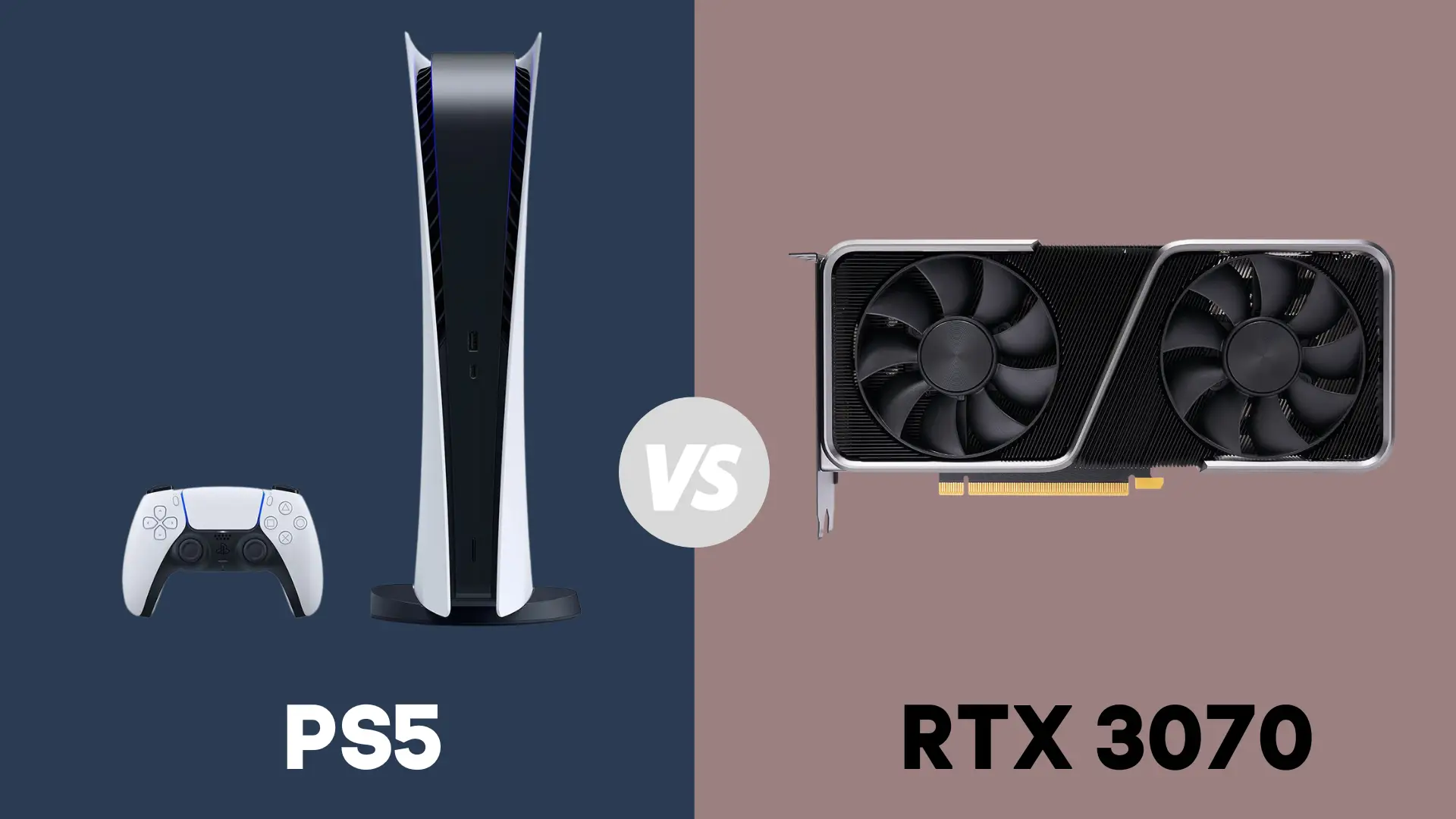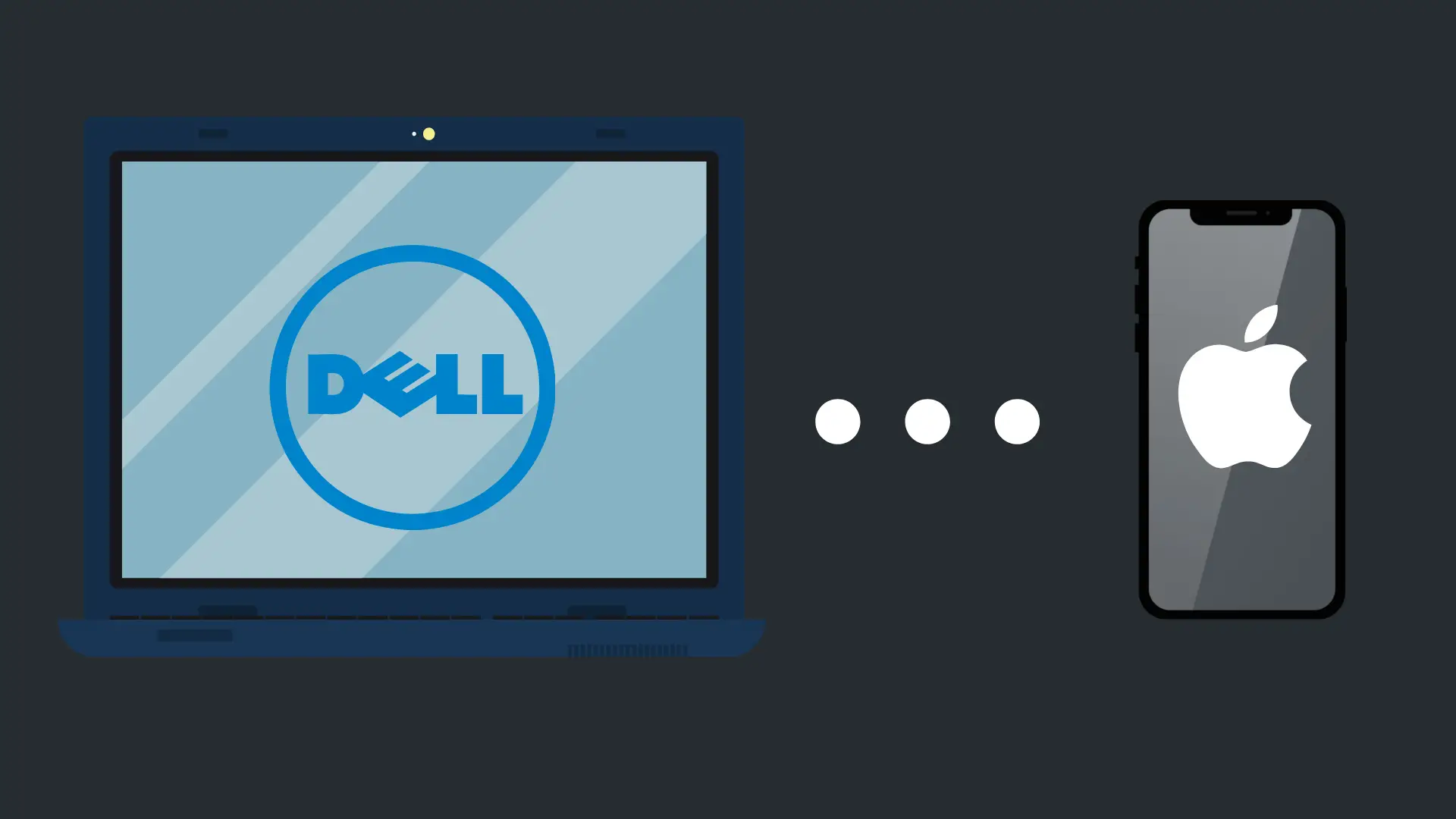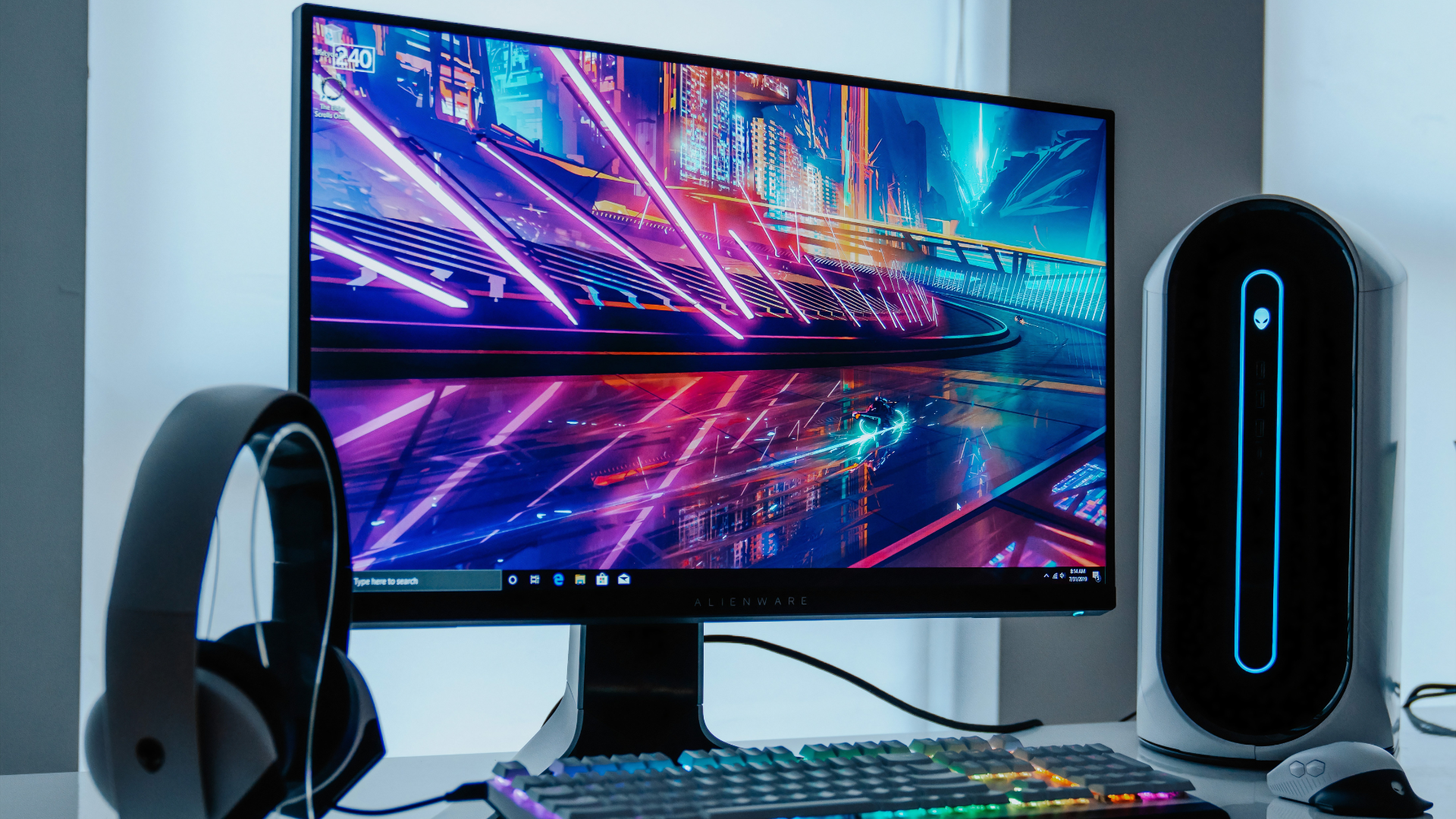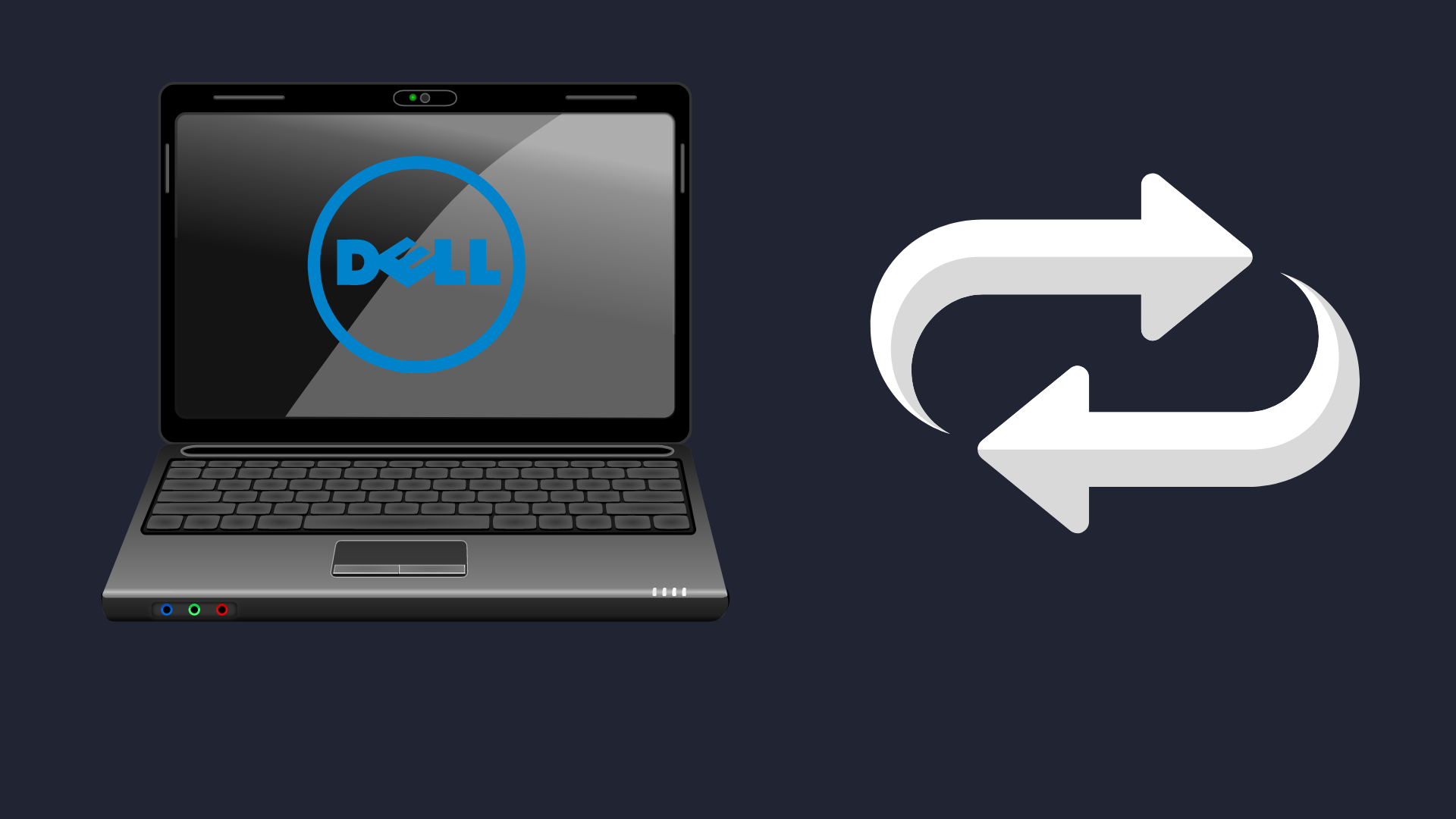Dual Curved Monitors: Are They Any Good?
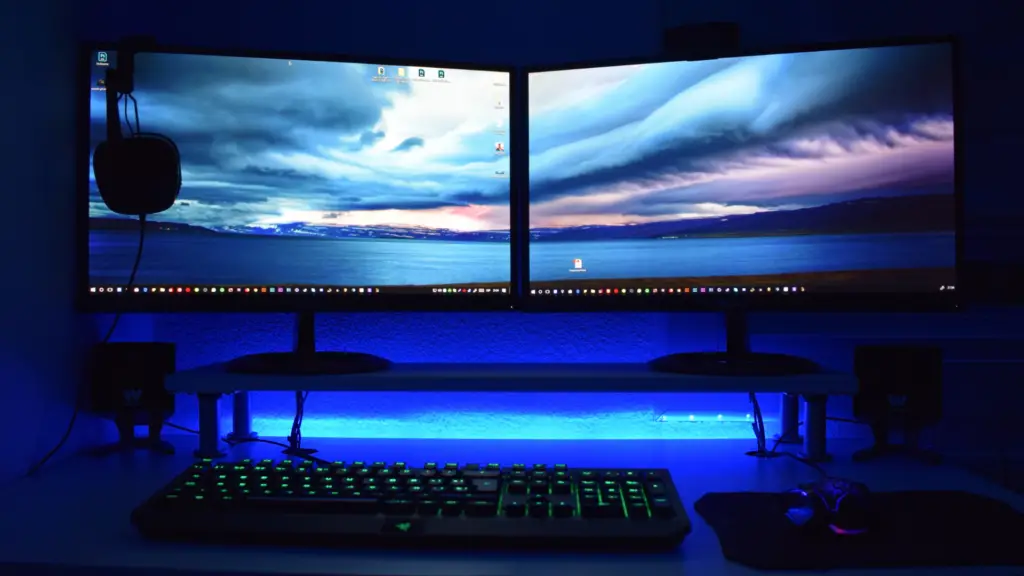
Computer monitors have evolved beyond anything that could have been imagined just a few decades back. The clunky, heavy tube monitor became small LED screens that morphed into the large monitors with stunning resolutions that we have today.
Larger, more accessible monitors have become increasingly important due to the work-from-home revolution and the need to view multiple software applications or Internet screens simultaneously. Life requires multitasking, and digging through many open windows doesn’t accommodate those of us doing more than two things at any given time.
A pair of curved monitors are a tasteful and elegant solution when more screen space is desired.
What Is Better, Flat or Curved?
Curved monitors are a relatively new development. If you were to see a flat and curved monitor side-by-side, it’d be natural wonder what makes one better than the other. Sure the curved monitor looks pretty neat, but why is it curved?
Well, there are some pretty significant benefits to curved monitors that are unique to their design.
They are immersive
Immersion is the gold standard when it comes to viewable media. The experience becomes immensely more enjoyable when a product makes you forget you’re staring at a screen.
The closer a product is to replicating real life, the better it creates a sense of immersion. Curved monitors use a technology called ocular perception, a human trait we all learn at an early age.
Human beings see the world in three dimensions–length, width, and height. If we only saw in two dimensions, we’d see the whole world as flat, which is where curved monitors come into play.
A curved monitor better represents three dimensions by expanding on peripheral vision. Flat monitors are, well, flat and don’t use peripheral vision, thus offering a weaker immersion experience.
Distortion is eliminated
A blurry picture is annoying. It’s frustrating when your hardware isn’t performing and enlarging an image or video and seeing the quality suffer a fair amount of distortion, especially at the edges.
Flat monitors cause that distortion, and as the screen size grows, that distortion increases. Curved monitors minimize distortion issues, a substantial advantage.
This difference is due to the physics of light projection. Flat-screen images are blasted in a straight line, which comes at viewers and past their sides. The shape of curved screens means images are aimed at the viewer from all parts of the screen resulting in eliminated distortion.
Greater eye comfort
For the same reasons of eliminating distortion, curved monitors are more comfortable for your eyes. The curve means our eyes take in the entire picture simultaneously, reducing strain.
Depending on the size, flat screens create eyestrain when the screen exceeds your natural field of view. The curve allows your eyes to take in the whole picture, creating a natural feeling that promotes comfort.
They feel larger
Curved monitors feel larger when your eyes more efficiently cover a much larger field of view due to light from all angles hitting your eye. The same technology that creates greater immersion does so with the benefit of feeling larger.
More screen space
Flat monitors typically have a 16:9 aspect ratio, whereas curved monitors are usually ultrawide, offering a 21:9 aspect ratio. The result is 33% more horizontal screen real estate.
For those of us that use multiple applications, the curved monitor accommodates more of them. Suppose a gamer is using a curved monitor. In that case, many new games accommodate the larger aspect ratio making them even more fun due to the greater immersion and an extended field of view.
Perfect for workers
All of the benefits add up, especially for remote workers. Those staring at a screen all week are more comfortable and have less ocular strain. When work ends and a video game starts, the more immersive experience makes it much more fun.
Some of us watch the game while working or need multiple windows to do our jobs. The ability to take it all in is unique and an excellent experience.
Some Minor Drawbacks
Curved monitors are superior in so many ways, but they have a few drawbacks that flat monitors do not have. These drawbacks are not so substantial that you’ll reconsider buying a curved monitor but they are notable.
Wall mounting is a problem
The same curve that comforts your eyes makes them hard to mount on a wall. They certainly won’t be flush with the wall and will require specific wall mounts and positioning. Tilt and swivel brackets and adjustable arm mounts help overcome the problem of wall mounting.
This issue has no impact on the monitor’s performance and is primarily superficial.
More angles for glare
The geometry of the curve makes it more prone to glare when viewed at certain angles. A flat screen has one angle, whereas curved screens have many angles due to curvature.
Positioning a flat screen at angles away from light sources is simple, but this is a much more difficult task when there are many angles. Placing the monitor away from as many light sources as possible or using it with the lights off are the best strategies to reduce the glare from a curved monitor.
Desk space is essential
It takes a wide desk to accommodate two wide-screen monitors, and the curve demands some depth. If you don’t have the desk size and don’t want to buy a new one, one of your monitors might end up returned or back in the box.
Additionally, if your office space is smaller, the expanded desk size could constrain your room or just not fit.
Before your purchase, it’s best to get out your measuring tape, do some preplanning, and contemplate the size of your new desk.
One way to overcome this and still have far more screen real estate is to use dual curved screens with the more traditional 16:9 aspect ratio. You still get the benefits of the curve, a ton of screen space, and some fantastic immersion. If your desk fits two monitors of your current screen size, dual curved 16:9 monitors won’t take up substantially more space. Because of their curvature, they only require a little more depth.
Dual Curved Monitors–An Amazing Setup
The result is impressive if you find two monitors following each other’s natural curve. Imagine that amount of screen real estate without the strain on your eyes, head, and neck throughout your work week. Dual flat monitors can’t compete.
When the monitors are side by side, and your computer is set up to see the monitors as an extended screen, the immersion is phenomenal. Sure, dual flat monitors will offer similar productivity benefits and decent gaming views. Still, the view from dual curved monitors can’t be beaten.
The benefits increase when great computer time is necessary
The dual curved monitor setup becomes even more impressive when you need more from it. For remote workers, those who depend on the Internet daily, and gamers or computer hobbyists, dual curved monitors are fantastic.
If you spend little time on your computer or play games on a console, dropping extra money for dual curved monitors might not be worthwhile.
For those that want the most impressive setup at any cost, impressive might be an understatement when it comes to dual curved monitors. This setup never fails to blow away visitors that haven’t seen dual curved monitors in use before. Gaming friends will be incredibly jealous, and you may expect them to ask to use your system.
Prices have dropped substantially
Like all newer tech, the initial prices are high and then drop dramatically. You might remember when 55” LED TVs cost 3-4 times more than now. Curved monitors have followed that same trajectory, resulting in prices that are no longer significantly higher than their flat counterparts.
The Bottom Line
A dual-curved monitor setup is immersive and cool, causes less eye strain, and looks like you came from the future. This is the stuff of super spies or big-time Wall Street traders.
The price drop has made this setup feasible for anyone wanting a next-level viewing experience. Games look unreal, and looking at multiple Internet screens or applications is more accessible. For those of us that watch football while working, the difference is seeing the game while working instead of just hearing it.
The dual monitor setup has great utility and a ton of benefits. Were curved monitors still pricey, it would be a setup for only the true die-hards, people with money to blow, or someone watching seven stock trading screens at once. That’s no longer the case; now, anyone can realize the benefits of dual curved monitors.


